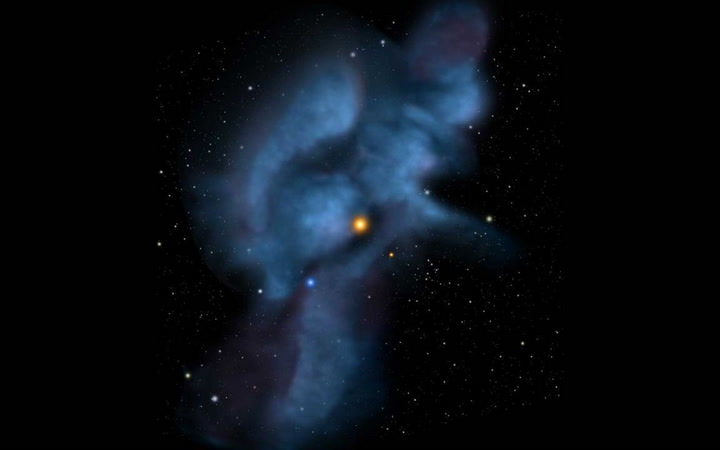1. Cosmic Perspective
2. Understanding Our Place in the Universe
3. Detailed Cosmic Address
It’s time to get a powerful new perspective on life, the universe, and everything. Yes, things aren’t going too well on planet Earth in 2022, but worrying won’t get us anywhere. So instead, take a step back from everything that’s going on and just consider this: we all live on a little blue-green planet orbiting an average star on the outskirts of a massive galaxy of up to 400 billion other suns. Incredibly, that’s just a tiny part of the story.
This is your cosmic address, and it’s going to change how you think about everything:
Earth, the Solar System, Oort Cloud, Local Fluff, Local Bubble, Orion Arm, Milky Way Galaxy, Local Group, Virgo Supercluster, Laniakea Supercluster, Universe.
The first two are easy to grasp, but do you understand the others? Let’s take them one by one and determine exactly where we are.
Earth
You know this part. About 4.5 billion years old, Earth is a rocky planet in the habitable zone around the sun, and it’s the only place we know of where life exists. It takes 365.25 days for Earth to orbit the sun from 92 million miles out — that’s one astronomical unit (AU), which is how distance is measured in the Solar System.
Solar System
The sun — a 4.5 billion-year-old, middle-aged star of no particular importance — has eight planets orbiting it on the same plane. Beyond the most distant planet, Neptune, is a donut-shaped region of minor planets, asteroids, and comets called the Kuiper Belt. The Solar System is 4.25 light years from the next star, Proxima Centauri. It would take about 18,000 years for a spacecraft to reach it.
Oort Cloud
Beyond the edge of the Solar System is the spherical Oort Cloud, a region of interstellar space that’s home to icy comets. Astronomers know very little about it, but every time you go stargazing, you’re looking through the Oort Cloud at what’s beyond. It’s from 2,000 to 100,000 AU from the sun — that’s about two light years.
Local Fluff
Also known as the Local Interstellar Cloud (LIC), we’re located on the edge of dust clouds between stars in the Milky Way galaxy. It’s an area of space that has a slightly higher density of hydrogen gas, the most abundant molecule in the universe. In 2019, researchers in Antarctica found dust produced by stars exploding as supernovas within the “fluff.”
Local Bubble
We’re currently in the center of a growing egg-shaped region of sparse gas in space called the Local Bubble, spanning 1,000 lightyears across. Thousands of other stars are traveling with the sun in this bubble, which is thought to be responsible for star formation.
Orion Arm
Our Milky Way is a spiral galaxy, consisting of a flat, rotating disk containing stars, gas, and dust, with a central bulge in the middle. When we look up at the Milky Way, we’re seeing the Sagittarius Arm, which contains that central bulge of stars. We, however, exist in a Local Bubble of the Orion Arm. From here, our sun takes 230 million years to orbit the Milky Way’s galactic center from 27,000 light years away.
Milky Way
A spiral galaxy about 100,000 light-years across, our home galaxy hosts up to 400 billion other suns. It’s estimated that there are at least 100 billion other planets in the Milky Way, with up to 10 billion planets supporting life.
Local Group
Galaxies in the universe are found in groups. This unimaginatively-named group of about 50 small “dwarf” galaxies orbits two big galaxies, the Milky Way and the Andromeda Galaxy. Some think that the two big galaxies will collide in about 4 billion years. From the Southern Hemisphere, two bright dwarf galaxies orbiting the Milky Way — the Large Magellanic Cloud and the Small Magellanic Cloud — are easy to see (Namibia, South Africa, and Australia are great places to see them from). You can see the Andromeda Galaxy from anywhere on Earth with your naked eye under a dark sky — it’s best seen in August through October.
Virgo Supercluster
Find the bright star of spring, Spica, in the constellation of Virgo, and you’re looking in the direction of the Virgo Supercluster. It’s home to about 100 small groups of galaxies, including our Local Group.
Laniakea Supercluster
Laniakea (pronounced lah-nee-ah-keh-ah) is a “galactic city.” Groups of galaxies are themselves found in clusters, all interconnected in a web of filaments in which galaxies are “strung like pearls.” A huge structure, the Laniakea Supercluster is 500 million light-years in diameter and contains 100,000 galaxies. Laniakea is Hawaiian for “immense heaven,” and it’s also called the Local Supercluster. Beyond Laniakea is the observable universe, estimated to be home to two trillion galaxies.
That’s your mind-blowing cosmic address explained — surely the ultimate journey.




